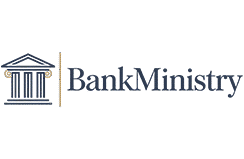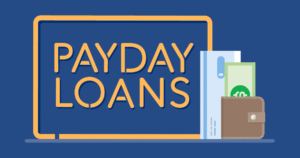Why Business Savings Accounts Matter in 2025
In today’s dynamic economic landscape, business savings accounts are essential tools for small and medium-sized enterprises (SMEs) in the USA looking to secure their financial future. Whether you’re a startup saving for expansion, a retailer managing seasonal cash flows, or a freelancer building an emergency fund, a well-chosen savings account can grow your capital while keeping it accessible. In 2025, with the Federal Reserve maintaining the federal funds rate at 4.25%–4.50% after three rate cuts in 2024, high-yield business savings accounts offer returns far exceeding the national average of 0.38% APY, making them a critical component of business financial strategy.
This comprehensive guide explores the best business savings account options available in the USA, drawing from in-depth analyses of offerings from Axos Bank, Chase, Premier Members Credit Union (PMCU), Prime Alliance Bank, and others. We’ll cover why these accounts matter, how to choose the right one, practical applications for different business types, and common pitfalls to avoid. By the end, you’ll have a clear roadmap to select an account that aligns with your business goals, whether you prioritize high APYs, low fees, bonuses, or accessibility.
What Are Business Savings Accounts and Why Are They Essential?
Understanding Business Savings Accounts
A business savings account is a deposit account designed specifically for businesses to store and grow surplus funds. Unlike personal savings accounts, these accounts cater to the unique needs of businesses, such as managing cash flow, saving for taxes, or funding future investments. They typically offer interest earnings (expressed as Annual Percentage Yield or APY), FDIC or NCUA insurance for security, and varying levels of access to funds through online banking, ATMs, or branch services.
In 2025, the best business savings account options provide APYs ranging from 3.35% to 5.15%, significantly outpacing the national average of 0.38% APY for savings accounts. For example, a business with $100,000 in savings earning 4.00% APY could generate $4,000 annually in interest, compared to just $380 at the national average—a stark difference for growth-focused businesses.
Why Businesses Need Savings Accounts
Business savings accounts serve multiple purposes:
- Emergency Fund: Protect against unexpected expenses, like equipment repairs or economic downturns. For instance, a restaurant might use savings to cover a sudden oven replacement costing $5,000.
- Tax Savings: Set aside funds for quarterly tax payments, avoiding cash flow crunches. A freelance consultant might save 25% of each project’s income for taxes.
- Growth and Investment: Accumulate capital for expansion, such as opening a new store or hiring staff. A small e-commerce business could save for a $20,000 inventory purchase.
- Cash Flow Management: Smooth out seasonal fluctuations, critical for businesses like landscaping firms with peak summer revenue.
- Interest Earnings: High-yield accounts grow funds passively, unlike checking accounts with minimal or no interest.
Without a dedicated savings account, businesses risk commingling funds in checking accounts, leading to disorganized finances or missed growth opportunities. Moreover, FDIC insurance (up to $250,000 per depositor) or NCUA insurance for credit unions ensures funds are protected, a vital consideration in uncertain economic times.
The Economic Context in 2025
The Federal Reserve’s decision to hold the federal funds rate at 4.25%–4.50% after cuts in 2024 has kept savings account rates relatively stable. However, anticipated rate cuts by late 2025 could lower APYs, making it crucial to lock in high-yield accounts now. Online banks like Axos and Prime Alliance offer 3.80%–4.00% APY, while traditional banks like Chase lag at 0.01%–0.02% APY, highlighting the importance of comparing options.
Top Business Savings Account Options in 2025
Based on analyses of Axos Bank, Chase, Premier Members Credit Union, Prime Alliance Bank, and other sources, here are the top business savings account options for 2025, evaluated for APY, fees, minimum deposits, bonuses, and accessibility.
1. Axos Bank Business Premium Savings
Overview: Axos Bank, a San Diego-based digital bank founded in 2000, offers the Business Premium Savings account with a competitive 3.80% APY, no monthly fees, and a promotional bonus, making it ideal for businesses seeking high yields and flexibility.
- APY: 3.80% (as of January 14, 2025).
- Monthly Fees: None.
- Minimum Opening Deposit: None.
- Bonus: Up to $375 with promo code BPS375 (requires $75,000 average daily balance for three of four statement cycles; $225 for $30,000). Expires September 30, 2025.
- Features:
- Unlimited ATM fee refunds.
- Seamless online banking and mobile app for deposits and transfers.
- Extended FDIC coverage up to $265 million via the Insured Cash Sweep program.
- Integration with Axos’s business checking and treasury management tools.
- Best For: Businesses prioritizing high APYs and bonuses, especially those with $30,000–$75,000 to deposit. Ideal for digital-first businesses like e-commerce or consulting firms.
-路径:Drawbacks: No physical branches; bonus requires maintaining high balances.
Example: A tech startup deposits $75,000 and earns $2,850 annually at 3.80% APY, plus a $375 bonus, totaling $3,225 in first-year earnings, assuming bonus conditions are met.
2. Chase Business Total and Premier Savings
Overview: Chase, with over 4,700 branches and 15,000 ATMs, offers Business Total Savings and Business Premier Savings, best for businesses needing in-person banking and integration with checking accounts, though APYs are low.
- APY:
- Total Savings: 0.01%.
- Premier Savings: ~0.02% with relationship rates (linked to premium checking accounts like Platinum Business Checking).
- Monthly Fees:
- Total Savings: $10, waived with $1,000 minimum daily balance or linked Chase Business Complete Checking.
- Premier Savings: Likely waivable with higher balances or linked accounts (exact fee not specified).
- Minimum Opening Deposit: $25 (Total Savings); higher for Premier Savings.
- Bonus: Up to $200 for savings (combinable with $300–$500 checking bonus, totaling $500–$900). Requires $2,000–$10,000 deposit within 30 days, maintained for 60 days, plus 5 qualifying transactions.
- Features:
- Nationwide branch and ATM access.
- Autosave tool for automatic transfers.
- High-rated mobile app (4.8/5 App Store, 4.4/5 Google Play) for deposits, transfers, and bill payments.
- Fraud protection tools (e.g., check monitoring, payment limits).
- Best For: Businesses with existing Chase accounts, needing overdraft protection or branch access, such as retail stores or restaurants.
- Drawbacks: Extremely low APYs; fees for excess transactions ($0.40 per item over 15) and cash deposits ($2.50 per $1,000 over $5,000).
Example: A retail business deposits $10,000, earns $1 annually at 0.01% APY, but secures a $200 bonus, totaling $201 in first-year earnings. The low APY limits long-term growth.
3. Premier Members Credit Union (PMCU) Premier Money Market Earnings
Overview: PMCU, based in Broomfield, Colorado, offers a Premier Money Market Earnings account with a top-tier 4.00% APY, accessible nationwide with a small membership requirement.
- APY: 4.00% (for balances up to $200,000).
- Monthly Fees: None mentioned.
- Minimum Opening Deposit: $5 (for savings account to establish membership).
- Membership: Requires $5 in a savings account and a small donation to Impact on Education (PMCU’s nonprofit affiliate).
- Features:
- NCUA-insured up to $250,000.
- Online banking access for nationwide customers.
- No minimum balance to earn APY.
- Best For: Businesses seeking high APYs with low entry barriers, such as freelancers or small startups.
- Drawbacks: Membership requirement; no physical branches for most users outside Colorado.
Example: A consulting firm deposits $50,000, earning $2,000 annually at 4.00% APY, with minimal setup costs, making it a strong choice for yield-focused businesses.
4. Prime Alliance Bank Business Money Market
Overview: Prime Alliance Bank, a Utah-based digital bank founded in 2004, offers a Business Money Market account with a 4.00% APY, ideal for businesses comfortable with online-only banking.
- APY: 4.00% (for balances up to $200,000).
- Monthly Fees: None mentioned.
- Minimum Opening Deposit: Not specified, but likely low.
- Features:
- FDIC-insured up to $250,000.
- Nationwide online access, with one physical branch in Salt Lake City.
- Simple, high-yield savings with no complex requirements.
- Best For: Digital-first businesses like online retailers or tech startups seeking high APYs without fees.
- Drawbacks: Limited physical presence; no bonus offered.
Example: An e-commerce business deposits $100,000, earning $4,000 annually at 4.00% APY, offering strong returns for businesses with significant savings.
5. Other Notable Options
- Pacific Western Bank (Online-Only):
- APY: 5.15% (highest noted in 2025).
- Details: Limited information on fees or minimums; verify terms directly.
- Best For: Businesses chasing the highest APY, if requirements are manageable.
- TAB Bank Business Money Market:
- APY: 4.00% (up to $1 million).
- Monthly Fees: None.
- Minimum Opening Deposit: $25.
- Best For: Businesses with large balances seeking high yields and low costs.
- Live Oak Bank Business Savings:
- APY: 3.35%.
- Monthly Fees: None; $10 dormant account fee for low-balance, inactive accounts.
- Minimum Opening Deposit: None.
- Best For: Small businesses wanting a reliable online option with no fees.
- First Internet Bank of Indiana Money Market Savings:
- APY: 3.46% (up to $5 million); 4.95% for higher balances.
- Monthly Fees: $5, waived with $4,000 daily balance.
- Minimum Opening Deposit: $100.
- Best For: Businesses with moderate to large balances seeking competitive APYs.
How to Choose the Best Business Savings Account
Selecting the right business savings account depends on your business’s size, goals, and operational needs. Here’s a step-by-step guide to making an informed decision, with practical considerations for 2025.
Step 1: Assess Your Business Needs
- Cash Flow and Balance Size:
- Small businesses or freelancers with modest savings ($1,000–$10,000) may prioritize no minimum deposit accounts like Axos or Live Oak.
- Larger businesses with $50,000+ may benefit from high-yield accounts like PMCU or Prime Alliance (4.00% APY up to $200,000).
- Access Needs:
- Need branch access? Chase offers 4,700 branches and 15,000 ATMs, ideal for cash-heavy businesses like restaurants.
- Prefer online banking? Axos, Prime Alliance, or TAB Bank provide robust digital platforms.
- Purpose:
- Emergency fund: Prioritize FDIC/NCUA insurance and easy access (e.g., Axos or PMCU).
- Tax savings: Use autosave tools (e.g., Chase) to automate deposits.
- Growth: Seek high APYs (e.g., Pacific Western at 5.15% or PMCU at 4.00%).
Step 2: Compare APYs and Fees
- APY: Higher APYs maximize earnings. For example, $50,000 at 4.00% APY (PMCU) earns $2,000/year, while 0.01% APY (Chase) earns just $5/year.
- Fees: Avoid accounts with high monthly fees or transaction limits. Axos and PMCU have no monthly fees, while Chase charges $10 unless conditions are met.
- Minimums: No-minimum accounts like Axos or Live Oak suit startups; First Internet Bank requires $4,000 to avoid fees.
Step 3: Evaluate Bonuses and Promotions
- Axos: Offers up to $375 for high balances, ideal for businesses with $30,000–$75,000.
- Chase: Up to $900 combined bonus ($200 savings + $300–$500 checking), but requires qualifying transactions.
- PMCU/Prime Alliance: No bonuses, but high APYs compensate for businesses focused on long-term growth.
Step 4: Check Accessibility and Features
- Online vs. Branch: Online banks offer higher APYs but lack branches. Chase suits businesses needing in-person services; Axos or Prime Alliance are better for digital-first firms.
- Tools: Look for autosave (Chase), ATM fee refunds (Axos), or integration with accounting software (Chase, Axos).
- FDIC/NCUA Insurance: Ensure deposits are protected up to $250,000 (or more with Axos’s Insured Cash Sweep).
Step 5: Consider Future Rate Changes
With potential Federal Reserve rate cuts in late 2025, lock in high APYs now. Online banks like Pacific Western (5.15%) or TAB Bank (4.00%) may offer better resilience than traditional banks like Chase.
Example Decision: A small retail business with $20,000 in savings and frequent cash deposits might choose Chase Total Savings for branch access and a $200 bonus, despite the low 0.01% APY. A tech startup with $100,000 and no need for branches might pick Axos for 3.80% APY and a $375 bonus, maximizing returns.
Practical Applications: Tailoring Accounts to Business Types
Different businesses have unique needs. Here’s how business savings account options apply to various industries in the USA.
1. Freelancers and Solopreneurs
- Needs: Low minimums, high APYs, easy online access for tax savings or emergency funds.
- Best Choice: PMCU Premier Money Market (4.00% APY, $5 minimum, no fees) or Axos Business Premium Savings (3.80% APY, no minimum, $375 bonus).
- Example: A freelance graphic designer saves $10,000 for taxes. With PMCU, they earn $400/year at 4.00% APY, compared to $1/year with Chase. The $5 membership fee is negligible.
2. Retail and Restaurants
- Needs: Branch access for cash deposits, overdraft protection, integration with checking accounts.
- Best Choice: Chase Business Total Savings (0.01% APY, $200 bonus, branch access) for businesses with $1,000+ balances to waive fees.
- Example: A coffee shop deposits $5,000 monthly in cash. Chase allows $5,000 fee-free deposits, with Autosave transferring excess funds to savings, earning a $200 bonus.
3. E-Commerce and Tech Startups
- Needs: High APYs, no fees, digital banking for remote management.
- Best Choice: Prime Alliance Bank (4.00% APY, no fees) or Axos (3.80% APY, $375 bonus).
- Example: An e-commerce store saves $50,000 for inventory. Prime Alliance earns $2,000/year at 4.00% APY, while Axos adds a $225–$375 bonus.
4. Large Businesses with High Balances
- Needs: High APYs for large deposits, extended FDIC coverage, treasury management.
- Best Choice: TAB Bank (4.00% APY up to $1 million) or Axos (3.80% APY, $265 million FDIC coverage).
- Example: A manufacturing firm with $500,000 in savings earns $20,000/year with TAB Bank, with no fees, or $19,000/year plus a $375 bonus with Axos.
5. Seasonal Businesses (e.g., Landscaping, Tourism)
- Needs: Flexible access to funds during off-seasons, low fees.
- Best Choice: Live Oak Bank (3.35% APY, no fees, no minimum) or PMCU (4.00% APY).
- Example: A landscaping company saves $30,000 during peak season. Live Oak earns $1,005/year, with no dormant account fees if funds remain untouched in winter.
Broader Context: Factors Influencing Business Savings in 2025
Economic Trends and Interest Rates
The Federal Reserve’s 4.25%–4.50% federal funds rate in 2025 supports competitive APYs, but potential rate cuts could reduce yields by late 2025. Businesses should prioritize accounts with variable-rate APYs from online banks, which adjust quickly to rate changes, unlike traditional banks like Chase with fixed, low rates.
Tax Implications
Interest earned on business savings accounts is taxable income, reported via Form 1099-INT for amounts over $10. Businesses should plan for tax liabilities, especially with high-yield accounts. For example, $4,000 in interest from a Prime Alliance account may add to your tax bill, so consult a CPA to set aside funds.
Digital Banking vs. Traditional Banking
Online banks (Axos, Prime Alliance, TAB Bank) dominate in APY and fee structures due to lower overhead costs. Traditional banks like Chase offer branch access and integrated services, appealing to businesses with physical operations. Hybrid businesses may use Chase for checking and an online bank for savings to balance convenience and yield.
FDIC/NCUA Insurance
All recommended accounts are FDIC-insured (banks) or NCUA-insured (credit unions) up to $250,000 per depositor. Axos stands out with its Insured Cash Sweep, extending coverage to $265 million, ideal for large businesses. Always verify insurance status to protect your funds.
Common Mistakes to Avoid When Choosing a Business Savings Account
- Chasing Bonuses Without Reading Terms:
- Mistake: Opening an account for a bonus (e.g., Chase’s $200 or Axos’s $375) without meeting requirements, like minimum balances or transactions.
- Solution: Review terms carefully. For Axos, maintain $75,000 for the full $375 bonus; for Chase, complete 5 qualifying transactions.
- Ignoring Low APYs:
- Mistake: Choosing Chase (0.01% APY) for convenience while missing out on 4.00% APY from PMCU or Prime Alliance.
- Solution: Prioritize APY for long-term savings. A $50,000 deposit earns $2,000/year at 4.00% vs. $5/year at 0.01%.
- Overlooking Fees:
- Mistake: Not meeting fee waiver conditions (e.g., Chase’s $1,000 balance or First Internet Bank’s $4,000 balance), leading to monthly charges.
- Solution: Choose no-fee accounts like Axos or Live Oak, or ensure you meet waiver criteria.
- Neglecting Accessibility Needs:
- Mistake: Selecting an online-only bank like Prime Alliance when your business requires cash deposits at branches.
- Solution: Match account type to needs—Chase for branches, Axos for digital access.
- Not Verifying Insurance:
- Mistake: Assuming all accounts are FDIC-insured without checking.
- Solution: Confirm FDIC (banks) or NCUA (credit unions) coverage. For large balances, consider Axos’s extended coverage.
Safety Precautions for Managing Business Savings
- Consult a Financial Advisor: Before opening an account, especially for bonuses or high-balance accounts, consult a financial advisor to ensure alignment with your business goals. For example, high APYs may come with balance requirements that strain cash flow.
- Monitor Rate Changes: APYs are variable. Regularly check rates, as a drop from 4.00% to 3.50% on a $100,000 balance reduces annual earnings by $500.
- Secure Online Banking: Use strong passwords and two-factor authentication for online accounts like Axos or Prime Alliance to prevent fraud.
- Plan for Taxes: Set aside 25%–30% of interest earnings for taxes. For example, $2,000 in interest may require $500–$600 in tax payments.
- Avoid Overfunding: Keep only necessary funds in savings to maintain liquidity. Excess funds could be invested in CDs or other vehicles for higher returns, if appropriate.
Practical Tools and Resources
To help you compare business savings account options, here’s a table summarizing key features:
| Bank | APY | Monthly Fee | Minimum Deposit | Bonus | Best For |
| Axos Bank | 3.80% | None | None | $375 | High yields, bonuses, online |
| Chase Total Savings | 0.01% | $10 (waivable) | $25 | $200 | Branch access, integration |
| PMCU | 4.00% | None | $5 (membership) | None | High APY, low entry |
| Prime Alliance Bank | 4.00% | None | Low (not specified) | None | High APY, online banking |
| Pacific Western | 5.15% | Not specified | Not specified | None | Highest APY (verify terms) |
| TAB Bank | 4.00% | None | $25 | None | Large balances, high APY |
| Live Oak Bank | 3.35% | None | None | None | Small businesses, no fees |
Note: APYs and terms are accurate as of July 2025 but may change. Verify with banks directly.
Additional Resources
- Bank Websites: Visit axosbank.com, chase.com, pmcu.org, or primealliancebank.com for current rates and terms.
- FDIC/NCUA: Check fdic.gov or ncua.gov to verify insurance coverage.
- Financial Calculators: Use tools like Bankrate’s APY calculator to estimate earnings. For example, $50,000 at 4.00% APY earns $2,000/year, while 0.01% earns $5/year.
- Tax Planning: Consult a CPA or use software like QuickBooks to track interest income and tax obligations.
Read More – best banks for small businesses
Frequently Asked Questions
1. What is the best business savings account for high APYs in 2025?
Pacific Western offers the highest APY at 5.15%, followed by PMCU and Prime Alliance at 4.00%. Axos (3.80%) is also competitive, especially with its $375 bonus.
2. Are business savings accounts FDIC-insured?
Yes, accounts from Axos, Chase, Prime Alliance, TAB Bank, and Live Oak are FDIC-insured up to $250,000 per depositor. PMCU is NCUA-insured. Axos offers extended coverage up to $265 million.
3. Can I avoid monthly fees on business savings accounts?
Yes, choose no-fee accounts like Axos, PMCU, or Live Oak, or meet waiver conditions (e.g., Chase’s $1,000 balance or linked checking account).
4. How do I qualify for savings account bonuses?
For Axos, maintain a $75,000 balance for three of four statement cycles ($375 bonus). For Chase, deposit $2,000–$10,000 and complete 5 qualifying transactions within 60 days ($200 bonus).
Disclaimer: This content is for informational purposes only. Always consult a qualified financial professional for advice and account selection.



